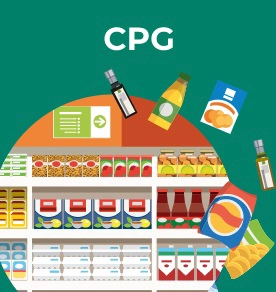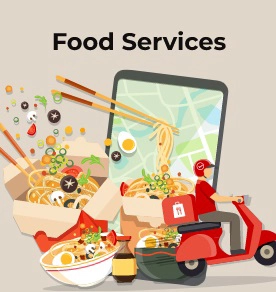Beyond Glass Skin: How K-Beauty is Winning India with Science, Smart Pricing, and Skin Trust

K-beauty’s journey in India has shifted from fascination to fierce loyalty., with brands like Amorepacific and kindlife leading the charge.
By Vaishnavi Gupta, Associate Editor
Oct 29, 2025 / 15 MIN READ
Once a pop culture fascination, Korean beauty has evolved into one of the fastest-growing and most credible skincare categories in India — powered by data, science, and trust. Scroll through any Indian beauty marketplace today, and you’ll see a clear shift — sleek pastel packaging, minimalist design, and products promising “hydration,” “glass skin”, and “barrier repair.” Korean beauty, or K-beauty, has firmly established itself as more than a passing trend.
According to a recent report by Sciative Solutions, K-beauty’s growth in India is being driven by targeted launches, smart pricing, and consumer credibility. The report revealed a 35 percent increase in brand portfolio size — a result of both new entrants and the resurgence of established players.
“India’s K-beauty trend is shifting from novelty to value-driven loyalty,” said Vijeta Soni, Co-Founder & CEO, Sciative Solutions. “Brands that balance pricing, perception, and performance are becoming leaders in the category. AI-driven pricing intelligence will be crucial for maintaining that advantage.”
A Market Driven by Smart Pricing, Not Deep Discounts
The most successful K-beauty brands in India are not necessarily the most discounted — they’re the smartest priced. Mid-priced yet highly rated brands such as COSRX, Laneige, and Beauty of Joseon consistently outperform both luxury and budget competitors. Around 30 percent of K-beauty brands adjusted their discount cycles in 2025, with February emerging as the most strategic month for launches and promotions.
Premium players like Lisen and Mixsoon deliberately stayed away from steep discounts to preserve brand perception, opting instead for perception-led growth. Meanwhile, Etude House’s measured discounting — averaging around 18 percent — proved effective in driving trials without eroding brand value. On the other hand, brands like AHC, Dr. Different, and VT Cosmetics, despite higher price tags, struggled due to lower consumer ratings and insufficient localization.
In short, the data shows that Indian consumers are no longer chasing deals — they’re choosing trust over transaction.
Portfolio Expansion
There’s an aggressive portfolio expansion among leading K-beauty players. LANEIGE increased its product lineup from 62 to 87 SKUs, while The Face Shop expanded from 77 to 104 SKUs, solidifying their leadership in variety and innovation.
Between May and July 2025, new entrants like Anua, VT Cosmetics, Mixsoon, and Round Lab joined the market, reinforcing that India’s appetite for Korean skincare remains strong and sustained.
Amorepacific India: Blending Korean Science with Indian Sensibility
At the forefront of this transformation is Amorepacific India, the powerhouse behind globally acclaimed brands such as Innisfree, Laneige, Sulwhasoo, and Etude. For Amorepacific, India’s evolution from curiosity to credibility represents both validation and opportunity.
“Rising ingredient awareness, clean beauty, and holistic skincare are key forces shaping K-beauty’s growth in India,” said Paul Lee, Managing Director & Country Head, Amorepacific India. “Consumers are seeking effective, science-driven formulations that align with sustainability and conscious beauty values. We’re responding through continuous R&D and ingredient expertise, ensuring that efficacy and sensorial experience go hand in hand.”
Amorepacific is also actively localizing its offerings. From reformulating textures to introducing smaller pack sizes and curated discovery kits, the company is ensuring K-beauty fits seamlessly into the Indian lifestyle. “Upcoming launches will focus on hydration, sun protection, and tone-care,” Lee added. “These categories align perfectly with Indian consumers’ skincare concerns and climate-driven needs.”
kindlife: Redefining K-Beauty Discovery for Young India
If Amorepacific represents legacy, kindlife embodies K-beauty’s modern evolution — digital-first, experiential, and community-led. Founded by Radhika Ghai, kindlife has positioned itself as India’s go-to platform for discovering trending K-beauty and global wellness brands.
“K-beauty’s growth in India is being shaped by a mix of cultural influence, scientific curiosity, and evolving skincare habits,” noted Ghai. “The impact of K-dramas and social media aesthetics has made ‘glass skin’ aspirational, while ingredient literacy has surged. Consumers now actively seek niacinamide, peptides, and snail mucin — once niche ingredients, now mainstream.”
kindlife operates through two verticals — its direct-to-consumer (D2C) platform, and its B2B2C arm, kindbox, which enables offline discovery through experiential retail in beauty stores and modern trade. Through these verticals, the company reaches both end consumers and retail partners, enabling widespread category expansion. kindlife’s strategic marketplace partnerships with Tata CLiQ and NewU have also amplified reach and visibility. Interestingly, the Northeast region has emerged as its best-performing market — and the brand is set to open its first standalone store there soon.
Numbers That Speak for Themselves
kindlife has recorded over 100 percent year-on-year growth, and is on track for a 3x increase in net revenue by March 2026. Currently, 85 percent of its sales come from online channels, while 15 percent come from offline retail — up from just 5 percent two years ago, showing growing consumer comfort with physical touchpoints.
The strongest-performing categories on kindlife are serums, sunscreens, and moisturizers, which together contribute around 40 percent of total K-beauty sales. “Among brands, COSRX, Beauty of Joseon, and Axis-Y have emerged as top performers,” Ghai revealed. “Serum and SPF sales alone have grown over 60 percent year-on-year.”
kindlife’s future roadmap includes expanding its offline presence to Delhi NCR, Mumbai, Bengaluru, Hyderabad, Chandigarh, Pune, and Ahmedabad, scaling live commerce, and introducing AI-native merchandising tools like kiki.AI to personalize discovery and recommendations.
Meanwhile, Amorepacific’s distribution strategy is rooted in an omnichannel model — spanning owned e-commerce platforms, top online marketplaces, modern trade, and offline retail partners. Its brands are widely available in metros and are now expanding rapidly into Tier II and Tier III cities to meet growing demand. Currently, 70 percent of Amorepacific India’s revenue comes from online channels, while 30 percent is derived from offline retail — a marked shift from two years ago, when offline sales dominated.
The Future of K-Beauty
In a market where 30 percent of brands now time their promotions and adjust pricing dynamically, success hinges on data-informed decision-making and authentic consumer connection.
As Dr. Anshu Jalora, Founder & Managing Director, Sciative Solutions summarized, “The future belongs to brands that use real-time pricing intelligence to complement strong storytelling and brand positioning. When you combine smart strategy with emotional credibility, growth follows naturally.”
Once a pop culture fascination, Korean beauty has evolved into one of the fastest-growing and most credible skincare categories in India — powered by data, science, and trust. Scroll through any Indian beauty marketplace today, and you’ll see a clear shift — sleek pastel packaging, minimalist design, and products promising “hydration,” “glass skin”, and “barrier repair.” Korean beauty, or K-beauty, has firmly established itself as more than a passing trend.
According to a recent report by Sciative Solutions, K-beauty’s growth in India is being driven by targeted launches, smart pricing, and consumer credibility. The report revealed a 35 percent increase in brand portfolio size — a result of both new entrants and the resurgence of established players.
Related Stories
Once considered a quiet corner of the apparel industry, India’s innerwear market has emerged as one of its most vibrant growth engines. What was traditionally a necessity-driven category has now…
- By Vaishnavi Gupta
- |
- 8 Min Read
In a landmark move that could reshape India’s Rs 16 lakh crore dairy industry, the 56th GST Council has approved a rationalization of GST rates on milk and milk products — a decision that has already…
- By Vaishnavi Gupta
- |
- 7 Min Read
Snacking in India is getting a healthy makeover. As more people choose mindful eating and nutritious options, homegrown brands are changing the way we think about snacks. From nuts and trail mixes to…
- By Richa Fulara
- |
- 10 Min Read




